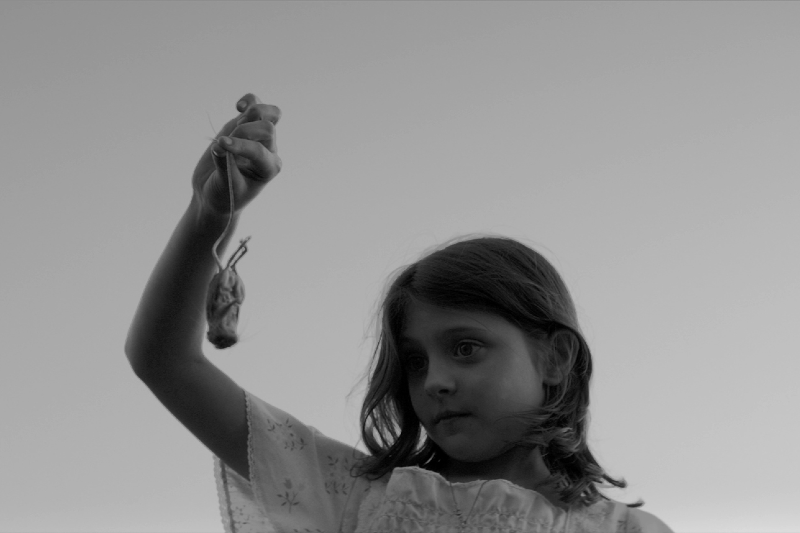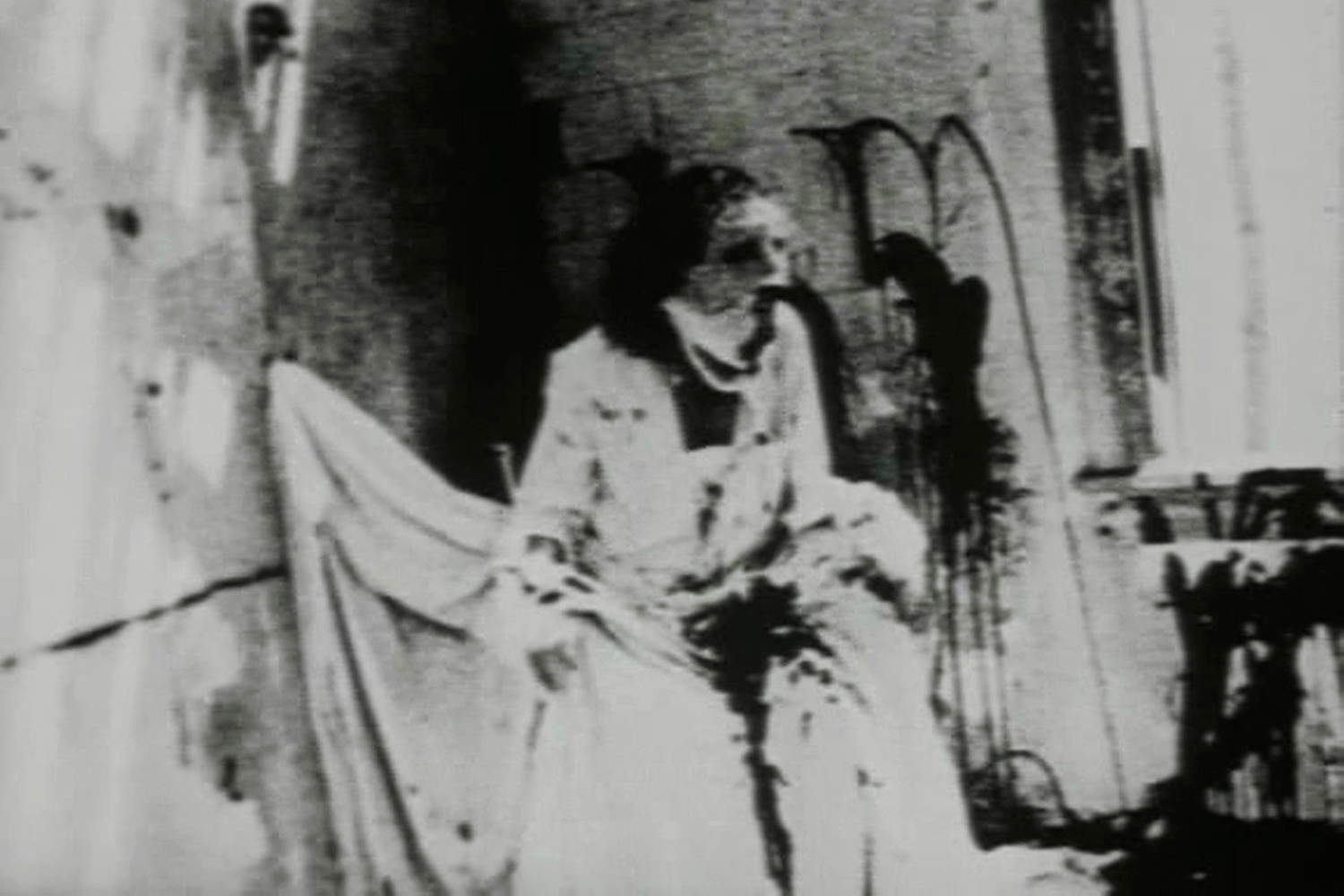Editorials
How ‘The Eyes of My Mother’ Upends Trauma Horror
August 30th, 2022 | By Marc Paterson

A strong stomach is needed to watch Nicholas Pesce’s feature debut The Eyes of My Mother. But while the film shares many traits with other trauma-based horror movies of its time, Pesce’s film doesn’t share their lofty metaphorical ambitions. It is a straight-ahead character study of a terrifying human being that will test your morality just as much as your endurance.
Become a Free Member on Patreon to Receive Our Weekly Newsletter
The Eyes of My Mother centers around Francisca, a young girl living with her mother and father in a remote farmhouse. Her cold demeanor is apparent early on when Francisca’s mother shows her how to dissect cows’ eyes. Whilst their father is away, a man appears and charms his way into their house. He brutally kills the mother while Francisca sits patiently in the kitchen as instructed. It is here that Francisca’s burgeoning nature is slowly revealed, as one tragic event after another isolates her more and more and her need for companionship drives her to grisly extremes.
After the bleak nihilism of 2000s horror, the 2010s seemed to display a sense of remorse. Movies like The Babadook and Hereditary wear their trauma on their sleeves. Their horrors are metaphors for grief. The shocking traumas of the new millenium were now starting to manifest themselves. Midsommar is the pain of a relationship ending, made flesh. It would be easy to place Eyes of My Mother alongside these movies; it is meditative in its pacing, taking its time to present its themes in favor of jump scares. Where it differs is its conscious departure from metaphor.
The horror presented here is not a substitute for repressed emotional trauma. It is an uncritical, unflinching study of a monster; the mundanities as well as the murders. Pesce’s amoral lens forces us to decide whether she is a victim or a villain, and does not point to one single moment in Francisca’s life where she crosses the line. There are no easy answers here. Our sympathies swing violently from her, to her victims, and back again. The question, “What makes a monster?” goes unanswered. Maybe it is unanswerable. That’s the point.
Kika Magalhães‘s approach to the role of Francisca was to play “very human.” Her desires are to love and be loved. She tried not to appear scary or odd or like the bogeyman but, in committing to the truth of who Francisca is, her performance can’t help but be terrifyingly off-kilter. The scene where Francisca brings home a girl from a bar is one of the scariest performances of a grisly production. Her otherness is as sharply contrasted as the black-and-white shadows and light of the movie itself. Even the farm animals she takes care of step away from her in fear as if, by some primal instinct, they know she’s dangerous.
The Portuguese song that features prominently in the movie is called “Com Que Voz.” The line: “De tanto mal, a causa é amor puro, Devido a quem de mim tenho ausente” translates as “So much evil, the cause is pure love, because of whom I am absent.” Francisca is a terrifying monster, rendered all the more so by her sensitivity towards her victims. Francisca’s skewed idea of love is not shaped solely by the loss of her mother, nor is it by her father’s detachment. She learns the idea that killing feels amazing from her mother’s murderer, and she knows that killing can get her what she wants. In the end, she is self-made.
Shot in eighteen days, on a budget of $300,000, Pesce’s debut feature is a stark serving of American gothic inspired by classic thrillers like Night of the Hunter but also arthouse shockers like Audition. During principle photography, the movie was getting an assembly cut on a near daily basis by the editor. Production notes and pick-up shots were easy to implement. The final cut was achieved in just 21 days. The choice to shoot in black-and-white was born out of Pesce’s love for movies like Straight-Jacket (1964) to set the film apart from other farmhouse-killing-spree movies that we’ve all seen.
The inky blacks and dreamy grays of the film have the effect of concentrating the essence of the characters, distilling them into a more potent mixture than color would allow. The grotesque killings are all the more sickening to sit through because color is stripped away, leaving us to fill in the gore with our own vivid imagination.
The director himself has said that horror is a lot more than Nightmare on Elm Street and Friday the 13th. Far from disparaging those movies, he celebrates the fact that there’s room for so much more variety and scope in horror. Pesce rejects the idea that The Eyes of my Mother is not a horror, or that it’s somehow above the genre. To Pesce, horror exists on a spectrum — from monochrome character studies at one end, to blood-red rollercoaster rides at the other — and he’s as comfortable for his movie to sit alongside those of William Castle as much as David Cronenberg.
The question of whether Eyes of my Mother is or is not “art horror” aside, one thing is certain; this is not a movie that deals in the abstractions of trauma metaphors but instead confronts the audience with the very real impact of what trauma can do to a person. We feel Francisca’s pain, but we also feel every stab wound of her victims. There’s as much terror in seeing her cleaning the kitchen floor as there is in watching her slowly stalking her prey across an open field.
The Eyes of my Mother is artful, thoughtful, and deals with grief. It never masks its true message beneath the surface. Francisca is not a stand-in for the real horror of the film — be that depression, misogyny, religious zealotry — she is a very real monster. And we as the audience are invited to take a front-row seat to her violence, whether we want to or not.


